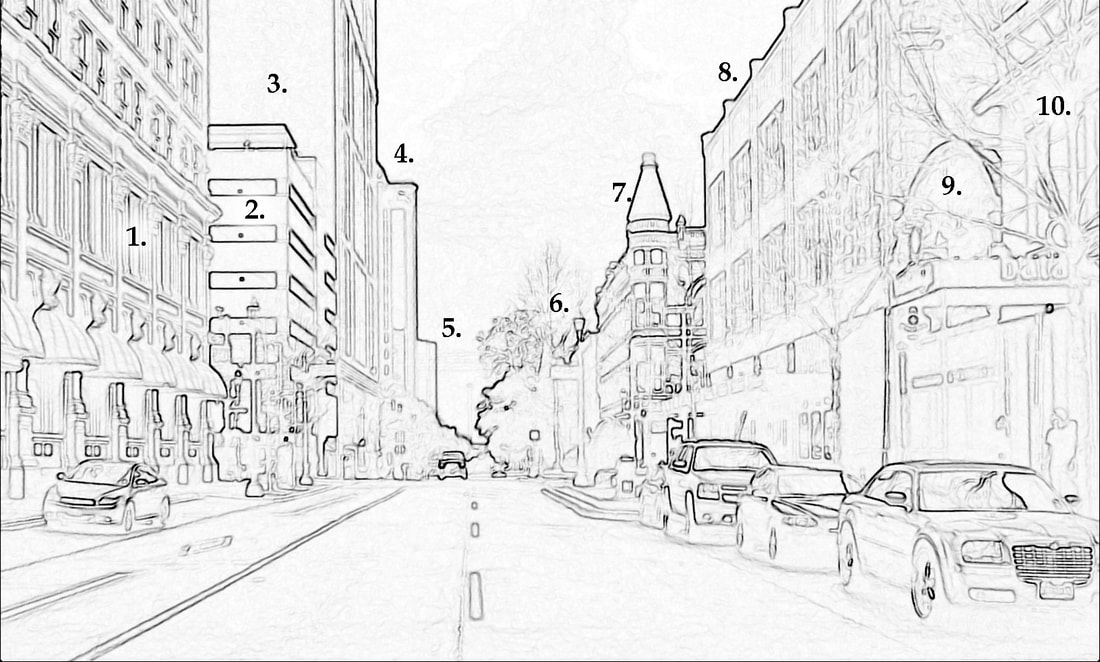Congress at Travis

6 December 1904: The corner of Congress and Travis was one of the busiest corners in Houston, situated between Main Street and Market Square, just a block off the courthouse. 1. 915 and 915½ Congress: The Wilson Building held mostly financial and real estate offices, including Harvey T. D. Wilson, member of Alfred Judson Condit’s firm which would in a few years become the sole agents for Westmoreland, a neighborhood then on the outskirts of town; 2. 219 Main: Houston National Exchange Bank, founded by Henry Samuel Fox, Sr (1833-1912), originally an immigrant from Berlin, Germany. His rather splendid home was 1206 Main at Dallas, a neighborhood populated only by the most successful Houstonians (See Main at Dallas); 3. 1016½ Congress: The Pillot Building was completed by Eugene Pillot (1820-1896) in 1857-1869 for merchants and professionals. By the time of this postcard many of the offices were occupied by real estate agents, a major business in town during a time when Houston doubled in population every ten years; 4. 301 Main Street and Congress Avenue: The Sweeney, Coombs, and Fredericks Building was built in 1889, but here is devoid of the turret. For a later view from the same intersection see Congress East, and for a view directed down Travis to the south, see Congress at Travis; 5. 912 and 912½ Congress and 300 Main: The Sterne Building built by Samuel Sterne (1829-1891) in 1884 included Houston Hat Company (1908) on the street level and physicians and dentists, barbers and the omnipresent real estate agents on the second floor. On the third floor were the furnished rooms of Mrs Mae Ross (1908); 6. 910 Congress: The domed building to the right was owned and operated by Emile Clede (1863-1916) and Henry Koenig, Sr. (1861-1938, immigrating from Austria in 1874, charter member of the Texas Chapter of the Knights of Pythias (See Pythian Castle). The Big Casino operated as a seafood market and restaurant, where they could cater family meals at private homes for a fee of 25 cents or serve a crowd in the building. Whether games of chance were available could not be determined. 7. 908 Congress: The Big Casino dining rooms.
|

22 February 2004: 1. 216-220 Main: Hotel Icon, formerly the Union National Bank, 12 floors, 1910, the building was renovated in 2003 to become a hotel; 2. 201 Main: Franklin Lofts Parking garage; 3. 1013-1019 Congress: Congress Plaza, 13 floors of parking and 4 floors of courtrooms, built on the site of the Zindler Building; 4. 201 Caroline: Harris County Civil Justice Center, 37 civil courtrooms on 18 floors, 2005; 5. 1401 Congress: Congress Street Garage and Jury Parking, 13 floors; 6. 300 Fannin: The 1869 Pillot Building began to disintegrate by the 1980’s and during a reconstruction in 1988 it collapsed. A replica was built in 1990 with some of the cast iron elements, and its location close to the courthouse complex has made it home base for attorneys and other professionals; 7. The Sweeney, Coombs, and Fredericks Building was built in 1889, the turret was added sometime between 1904 (this postcard) and 1912 (See Congress East); 8. 300 Main: Samuel Sterne's daughter, Pauline Sterne Wolff, replaced her father's 1884 building after it burned in 1916 with a structure of the same contours but a more modern appearance. Street-level Boomtown Coffee is busy in the early morning, and upper levels hold offices attorneys and other professionals; 9. 924 Congress: Okra Charity Bar is a watering hole donating part of their proceeds to numerous charities specified by patrons; 10. 908 Congress: Batanga, a South American tapas restaurant, offers an outdoor patio atmosphere and indoor dining for hotter months.
|
|
To: Darinka Draskovic
ulica F. Josiah 99 Sarajevu bosnien Austria Postmarked: Dec 6, 1904 Stamp: 2c Carmine George Washington #319 From: M. Lazic Message: gospojice Darinka. čestitam bozicne [blagdane] M. Lazić [Translation from Croatian] "Miss Darinka Merry Christmas M. Lazic" |
“Merry Christmas” M. Lazic wrote in Croatian to Darinka Drasovic in Sarajevo in 1904. This was very early for postcard communications, which had only begun to catch on in America, although Europeans had pioneered their use as brief communications. M. Lazic left a single data point in the records of Houston that could could reveal her identity: Lazic, Marie (widow of Anton), residence 13 Colby Place - 1905 Houston City Directory. That short street still exists on the East End between Commerce Street and German Street (now Canal), an area now occupied by warehouses. Her tiny place was mid-block on the west side of the unpaved street in a working class neighborhood. Residents were a mixture of blue collar whites, including foreigners, and African-Americans and Hispanics. Mount Zion Baptist Church, a “Negro” congregation, was in the same block on German Street, and behind the church, a series of “shotgun houses.” These tiny houses were a legacy of the Jim Crow period consisting of a single long room from which, it is said, a shotgun blast at the entrance would penetrate to the back wall. These houses were initially for freed black slaves in America’s apartheid state, but by the 20th century, they might house foreigners or Latinos, anyone who wanted easy terms in which there were no questions asked and no real expectation of habitability beyond what the tenant could provide. Langston Public School with a “Negro” student body, was across from the church, neither still exists.
Sarajevo seems to have been a troubled place a century ago as now, stamped with a military seal upon receipt. Darinka Draskovic may have been a relative or friend, the message is too generic to make a judgment on matters of relationship. Nothing further has yet been discovered regarding Marie or Anton Lazic. It seems probable that she remarried and was lost to the records. |

